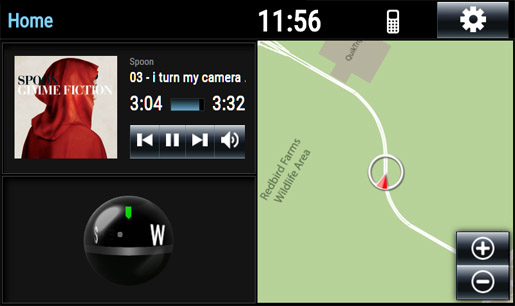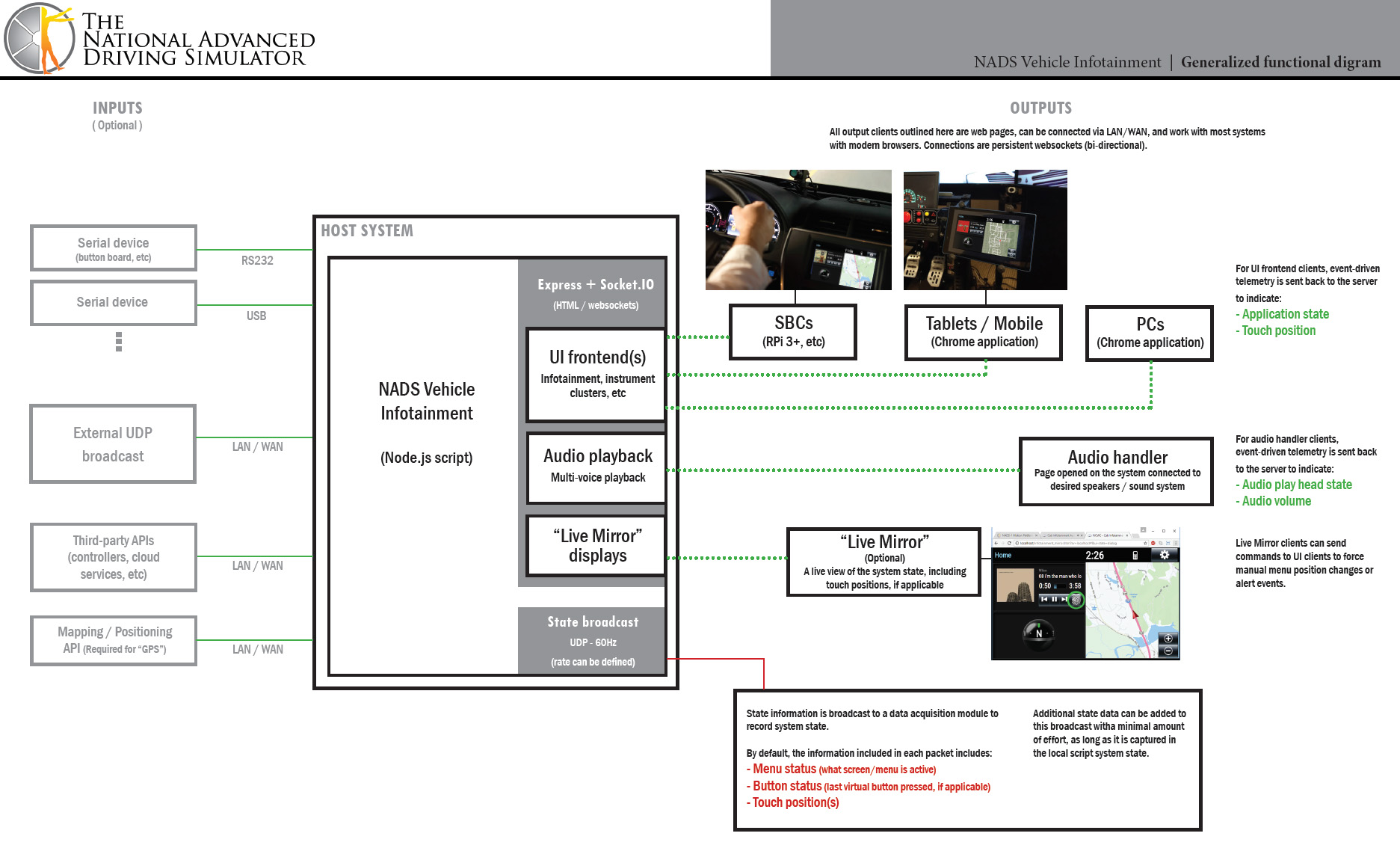Difference between revisions of "Infotainment System"
Steve Cable (Talk | contribs) (→Architecture) |
Steve Cable (Talk | contribs) (→Architecture) |
||
| Line 34: | Line 34: | ||
=== Host script === | === Host script === | ||
| − | The core of the Infotainment system is written in Node.js. The host script is the beating heart of the Infotainment system--for any of the other parts to work, this must be running. | + | The core of the Infotainment system is written in [https://nodejs.org Node.js]. The host script is the beating heart of the Infotainment system--for any of the other parts to work, this must be running. |
=== Audio handler(s) === | === Audio handler(s) === | ||
Revision as of 21:57, 23 May 2019

The standard system available with miniSim models a typical OEM infotainment system including the following functionality:
- Radio (requires internet connection)
- MP3 playback
- Navigation (NADS Springfield map only)
- Platform Independent (iOS, Android, Windows, Raspberry Pi)
Architecture

Host script
The core of the Infotainment system is written in Node.js. The host script is the beating heart of the Infotainment system--for any of the other parts to work, this must be running.
Audio handler(s)
By default, a single audio page (infotainment_audio.htm) is included. This page can handle 3 channels of stereo playback:
- Media playback
- Alert playback (temporarily mutes media playback on play)
- Notify playback
Display/input pages
This is where it gets interesting.







